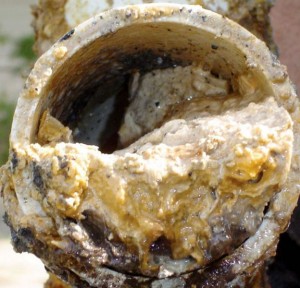Leading Water Issues, Old and New
by Emily McBroom and Gene Franks
![tapwater[3]](http://www.purewatergazette.net/blog/wp-content/uploads/2012/05/tapwater3-260x300.gif)
The statement,”my parents drank this water for 50 years, and it never hurt them” is no longer a valid excuse for consumers to not be concerned with their water quality.—Greg Reyneke.
In an article in H2O Quality magazine, water treatment specialist Greg Reyneke (see note below) commented on recent information that has surfaced about some old water treatment issues. Below are Greg’s comments, followed by some observations of our own which suggest practical approaches to dealing with the contaminants. Greg’s comments are italicized.
Arsenic
A 2010 assessment by the Environmental Integrity Project suggests that the risk of getting cancer from drinking water containing 10 ppb of arsenic is closer to 1 in 136, almost 15 times higher than current EPA assumptions (1 in 2000). Many scientists say the increased risk of cancer in humans who drink water, inhale dust, or ingest soil contaminated with high levels of inorganic arsenic puts the chemical’s danger level in the same category as that of smoking cigarettes.
The acceptable maximum level for arsenic in drinking water, as recommended by the EPA, is just 1/5 what it was a few years ago. Removing arsenic from a small amount of drinking water is fairly easy, while point-of-entry removal is difficult and expensive. Since arsenic is mainly an ingestion issue, we recommend removing it from drinking water and practicing common sense avoidance for other water in the home. In other words, drink water from your kitchen reverse osmosis (RO) unit, not from the bathroom sink. The best drinking water treatment for arsenic is reverse osmosis. Undersink filters with iron oxide media are also effective. Whole house arsenic treatment is possible but expensive and requires considerable upkeep.
Bacteria and Waterborne Pathogens
Bacteria exist in ALL water at some level, even safe, chlorinated city water. Some bacteria are relatively “safe,” but there are other potential problems like brain-eating amoeba that have been found in certain waters. The expense and difficulty of consistent testing often means that contamination may go undiscovered for extended periods of time.
By far the best residential treatment for bacterial contamination is ultraviolet. UV was at one time used almost exclusively with well water, but because of growing concerns over the effectiveness of city water disinfection, and because of frequent “boil water” alerts, whole house UV units are now becoming common items in homes with municipal water. UV can also be used for point of use applications, but it costs so little extra to do the whole house, point of entry systems are most common. UV is a reliable technology that adds nothing objectionable to the treated water. It is easy and relatively inexpensive to maintain.
Chlorine and Chloramine
While chlorination of water is probably one of the most significant contributors to lowering the risk of waterborne illness in the USA, there are significant negative effects, such as taste and odors, corrosion, and even a correlation to the development of some cancers.
Removing chlorine or chloramine from water for the whole home or for drinking water only is best accomplished with carbon filtration. There are innumerable products to choose from, including large tank-style filters, carbon block cartridges, and even small filters built into refrigerators. Whole house filters can remove chlorine or chloramine, but tighter drinking water filters are more effective at removing other chemical contaminants that might be present. An excellent residential treatment plan is a whole house carbon filter to provide chlorine/chloramine-free water for bathing and general household purposes, and a drinking water unit, either a tight carbon block filter or reverse osmosis unit, for drinking water only. In general, chloramine is much harder to remove than chlorine. Chloramine removal filters are larger and use better quality carbon (catalytic carbon) to do the job.
Hard Water Scale and Soap Interactions
While many people might consider hard water to be a simple aesthetic issue, it really is bigger than that. Hard water is a significant drain on a family’s monthly budget and has a decidedly negative impact on the planet due to increased heating and cleaning expenses, along with premature appliance failure. Consumers are clamoring for low-salt and no-salt solutions to their hard water problems that “waste” a minimum amount of water.
While there is no substitute for the conventional salt-based ion exchange water softener, salt-free alternatives, especially TAC (Template Assisted Crystallization) units, are growing in popularity fast. While TAC units don’t do some of the things softeners do, they have the advantage of requiring no salt, electricity, or connection to a drain. They don’t use water for regeneration or add salt to wastewater.
Lead
While Flint, Michigan, captured the imagination of the nation, lead can also be found at some level in other areas. In 2017, 779 Texas schools (about 71%) were reported to have lead in their drinking water, according to an analysis of testing data by Environment Texas Research and Policy Center. Lead is a potent neurotoxin, affecting the way children learn, grow, and behave It can cause problems that will persist into adulthood.
Lead is a tricky issue, because lead in drinking water often comes from the pipes inside the home itself, making a “whole house” filter for lead pointless. Nevertheless, growing evidence shows that infrastructure issues, old lead city water pipes in particular, are adding lead to water coming into homes. Lead can be removed by ion exchange and by special carbon block filters with added resins, but reverse osmosis is the best treatment for drinking water. As with many contaminants, lead is mainly an ingestion issue, so having a good reverse osmosis unit in the kitchen is the most practical treatment.
Manganese
The serious health risks of consuming water containing manganese have been overlooked for far too long. Long-term consumption of even low levels are now related to complications involving alterations in neurotransmitter and enzyme levels in the brain that can cause nerve damage, brain changes, hormone alteration, and possibly even the proliferation of certain cancers.
Manganese is normally a well water issue, but we increasingly hear reports of manganese in water from central suppliers, especially small water systems. Manganese, regardless of the source, is a significant aesthetic issue, causing odors and dark stains, and it is now being regarded as a health issue as well. Whole house treatments can be complicated, but they can also be as simple as a conventional water softener or a backwashing filter. For drinking water, reverse osmosis assures manganese-free water.
Perfluorinated Compounds (PFC, PFOS, PFOA)
Perfluoroalkyls are not natural, and PFOA and PFOS are the two types that have typically been found in the largest amounts. These substances are unique because they repel oil, grease, and water – meaning they have been used to help produce countless convenient modern products. Exposure levels of these chemicals can already be found in the blood of most Americans. Health risks from exposure to these chemicals include hormone disruption, fertility issues, and even certain cancers.
Although treatment for perfluorinated compounds in municipal systems can be complex, carbon filtration for whole house and reverse osmosis for drinking water have been found to provide significant reduction for homes.
Nitrates
One other issue we would like to add to the list of regulated contaminants that should be taken more seriously is nitrates. There is
growing evidence that nitrate contamination is becoming much more common, not only in well water but also in city water supplies. The long-standing EPA allowable amount of 10 parts per million may be way too lenient. Although nitrates can be removed with ion exchange, the best and easiest way to provide nitrate-free drinking water is with an undersink RO unit in the home. Whole house carbon filters are not effective with nitrates.
Conclusion
Of the issues discussed, whole house treatments are practical for bacteria and hardness. For city water with chlorine, chloramine, and general chemical issues, including PFAS, an appropriately designed and sized whole house carbon filter is recommended. For drinking water issues like lead, nitrates, and arsenic, an undersink reverse osmosis unit is the treatment of choice. A good undersink RO unit covers virtually all drinking water issues. It includes carbon block filters for chemical reduction and a very tight membrane that strains out lead, arsenic, fluoride, nitrates, sodium, and other undesirables.
Reference: Greg, Reyneke, “It’s Up to You,” H2O Quality (a publication of the Texas Water Quality Association), Winter, 2019. pp. 10-12. See also www.gregknowswater.com .




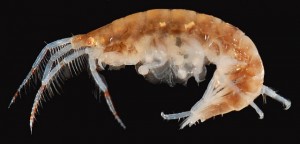
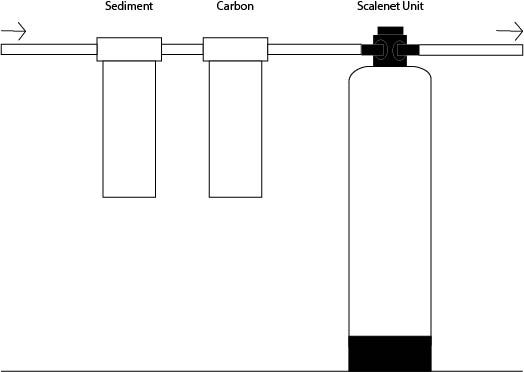
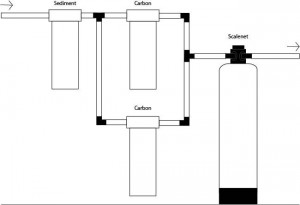
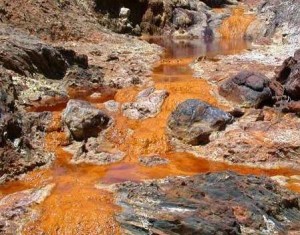
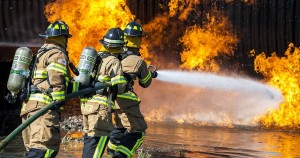
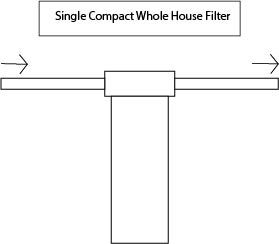
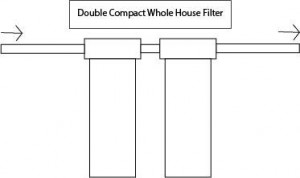
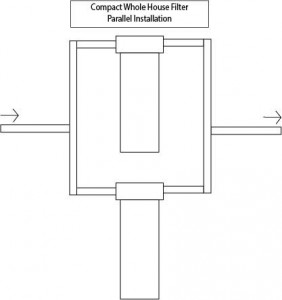
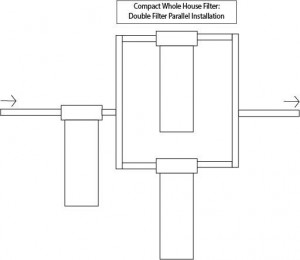
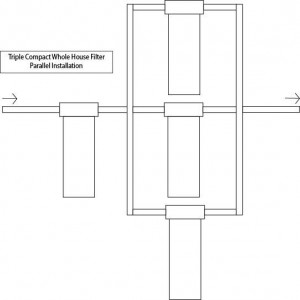
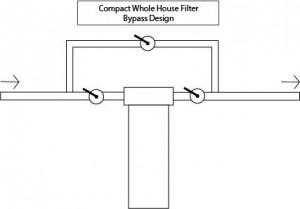
![tapwater[3]](http://www.purewatergazette.net/blog/wp-content/uploads/2012/05/tapwater3-260x300.gif)
